Alaska’s Little Norway
August 27 and 28
If asked to invent from whole cloth a town different in every way from Kake, I would have been hard pressed to do better than Petersburg.
From Tracy Arm we drop the forty miles south to Portage Bay for the night, and next morning I make the quick run of twenty miles into Petersburg a laborious slog by missing our tide. Again the weather is fine, and the great range of glacier-covered mountains to the east rising high above the tree line, some even above snow, keep Murre so enthralled she insisted on pursuing a course toward them. A stern talking-to does much less to correct her wayward autopilot than, I discover, turning the damn thing on.
Petersburg is situated just inside the north end of Wrangell Narrows, and if you don’t know a single thing of its heritage, the fish processing plant’s over-sized Viking ship emblem corrects this while your boat is still in the channel.
After fueling I call on the radio, “Petersburg Harbor, sailing vessel Murre. Overall 34 feet, beam 9, requesting a slip for two nights.”
“Welcome to town,” replies a cheery female voice. “We have slips in either north or south harbor, which would you prefer?”
“The one with the electric tram serving gin and tonics whose first stop is a hot shower.”
“North Harbor it is then. When you’re all tidied come see me in the office.”
Even from the docks the waterfront homes glisten with fresh paint. The signs of downtown businesses, including that of the police station, are decorated in Scandinavian flowers. Bright red and white striped flags hang everywhere. The streets look recently washed. All of which give one the impression that a parade is immanent. In fact, it’s just a normal workday; trollers and tenders queue in front of the fish plant, which whirs and clangs loudly, suggesting it’s in high gear.
When I arrive, I find the walls of the harbormaster’s office covered, floor to ceiling, in neatly framed photographs of Petersburg’s fishermen and their boats, leaving no doubt what and who built the town. Robust, typically smiling men stare back, men with names like Lief Thorsen, Poker Ole, Reider Enge.
Before anything else, the harbormistress hands me a town brochure–“Petersburg, Alaska’s Little Norway” it declares–and she circles the library’s location (“Free wifi,” she says. Smart lady, I think.) along with that of the museum, two good restaurants and the two grocery stores.
She finishes her tour with, “Hopefully you’ll like our town well enough to stay a third night, maybe longer.”
This kind of thing just does not happen! Alaska’s official term for people like me, “transient”, informs the typical harbormaster’s sense of hospitality, which is to say it relieves him of any such inclination.
Impressed I say, “You people are very put together!”
“Well, we are Norwegian,” replies the harbormistress.
As I explore the town it appears everyone in Petersburg is Norwegian. Tall, swarthy, blond-haired men greet each other as Lars and Sven and Eric, and the women too are fair-haired, sturdy, rosy-cheeked, laughing as they talk. I don’t encounter another dark haired person until I come to the taco stand, whose owner appears to be Mexican, though as I approach the window he is addressing the cook in Norwegian.
“It is just too hot today,” the man says after I’ve ordered. I stare at his brown face and then remark that I am still wearing a sweater. “Well, you must not be from here,” he says. “We are not used to such bright sun,” and at this he winces.
A walk through the neighborhoods shows that Petersburg is neat as a pin and entirely on theme. House exteriors are bright and done up in gingerbread. The one hotel is the Scandia House; the one breakfast place serves dishes called OLE and LINA; The Last Word on Lutefisk is displayed prominently on the shelves of the bookstore, and not to be outdone, next to it sits proudly The Last Word on Lefse. Banished are the rude bumper stickers so common in Sitka, and rare is the ramshackle cottage that defined Kake. In fact, all that indicates I am in a frontier famous for its upstart, lawless towns is one elaborate house that flies the American revolutionary flag declaring “Don’t Tread on Me.” Strangely, the house flies a second flag which serves to temper the immodest, rebel message. It reads “Stay with the Ship.”
But after a time the treacle overwhelms. Petersburg begins to look more like an amusement park than a town, and I wonder if real people live here.
Two encounters serve to suggest they do, or at least did.
The Petersburg museum is a small room in back of the Visitor’s Center. In it are displays commemorating the area’s commercial fishing heritage: a cabinet of antique, handmade salmon lures–hoochies, gobpuckies, whobblers, and spoons–sits across from a small man holding the world’s largest caught King Salmon, which is next to a model of a floating fish trap, etc. But of greater interest is an unadvertised display on a plain table in the corner. Here sit three green spiral binders, each containing page after page of black and white mug shots.
During WWII and for security reasons (Petersburg is open to the Pacific) the Coast Guard took identification photographs of all its citizens, and recently these have been collected. The first binder collects all of the known men with their names and occasionally a note on their occupation, the second all the known women, and the third binder is reserved for photos of residents whose identity has been lost. Each binder is equally full.
In the first binder I find Bud Benitz, a dashing, Errol Flynn type who, it is noted, invented the screw driver, and then Thomas Lersten who was a “world wrestling champion in the 1920s and swam at Hungary Point in winter.” Melvin Gierde, the skipper of the fishing vessel Happy is pictured, and he looks about as miserable as a person can be. Then there’s the plumber known as “Muddy Bue” for his habit of tracking dirt into the homes of his customers and a skinny man who was “Cannery mechanic and undertaker.”
What is most striking is how tough these people seem. It’s difficult to imagine them living in such a cute town.
Returning to the street I walk to the Fishermen’s memorial. Next to the Son’s of Norway Hall and overlooking the river is a simple kiosk hung with bronze plaques. “Fredrick Bushmann, Lost off Dall Island”; “Ted, Cindy, Ryan Thynes, Lost June 16, 1975”; “Jon Enge, Fisherman Lost at Sea”; “Claude Lyle Rountree–Red, Right, Return.”
Different communities deal differently with hardship. Kake is resigned into its chaos, but Petersburg fights on with the good cheer contained in a can of bright paint and a smile.
Comments are closed.
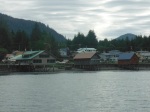
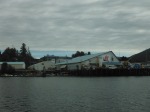
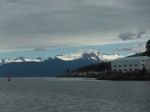
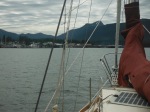
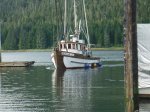
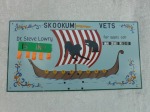
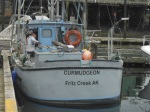
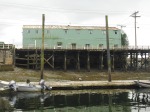
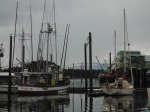
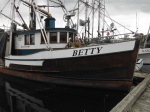
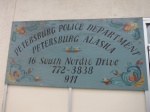
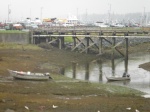
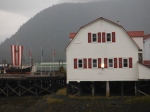
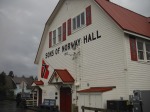
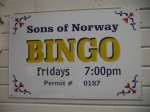
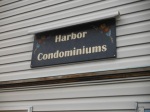
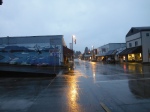
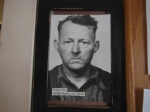
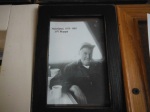
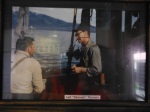
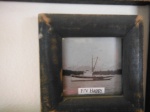
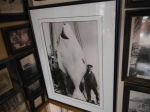
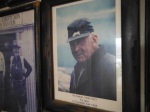
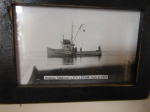
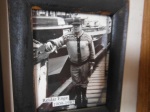

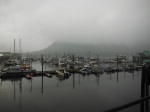
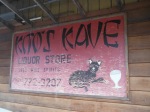
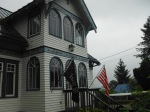
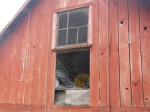
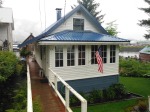
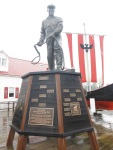
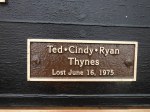
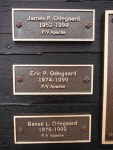
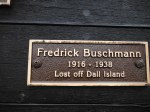
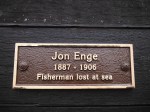
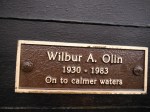
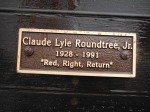
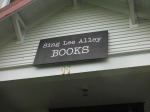
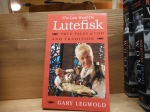

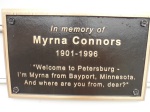
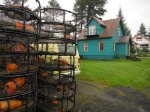
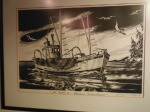
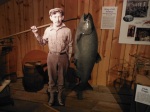
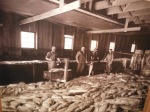
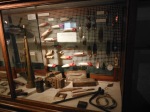
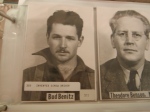
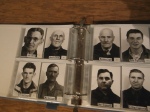
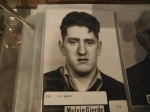
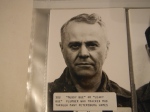
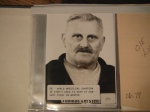
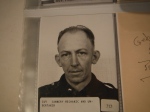
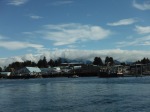
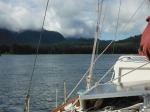
“Randi Jo,” LOL.
About the commemorative that had “red right return” on it, do you think that was a morbid way of reminding viewers that the dearly departed had gotten on the wrong side of the buoy?
Re RRR, I doubt it, though obviously I don’t know. Would be like a driver’s commemorative: merge with caution. 🙂
Yes, it would be impolite in the extreme. Not quite as bad as chopping off the hands of thieves and displaying them in the town square…but trending in that direction. On the other hand (sorry) what other reason could there be to enshrine the RRR rule on a memorial plaque? C’mon, you’re an author, and this is your story. All you have to do is make up an answer. Don’t make me get out the sledge hammer and work over your ankles, here.